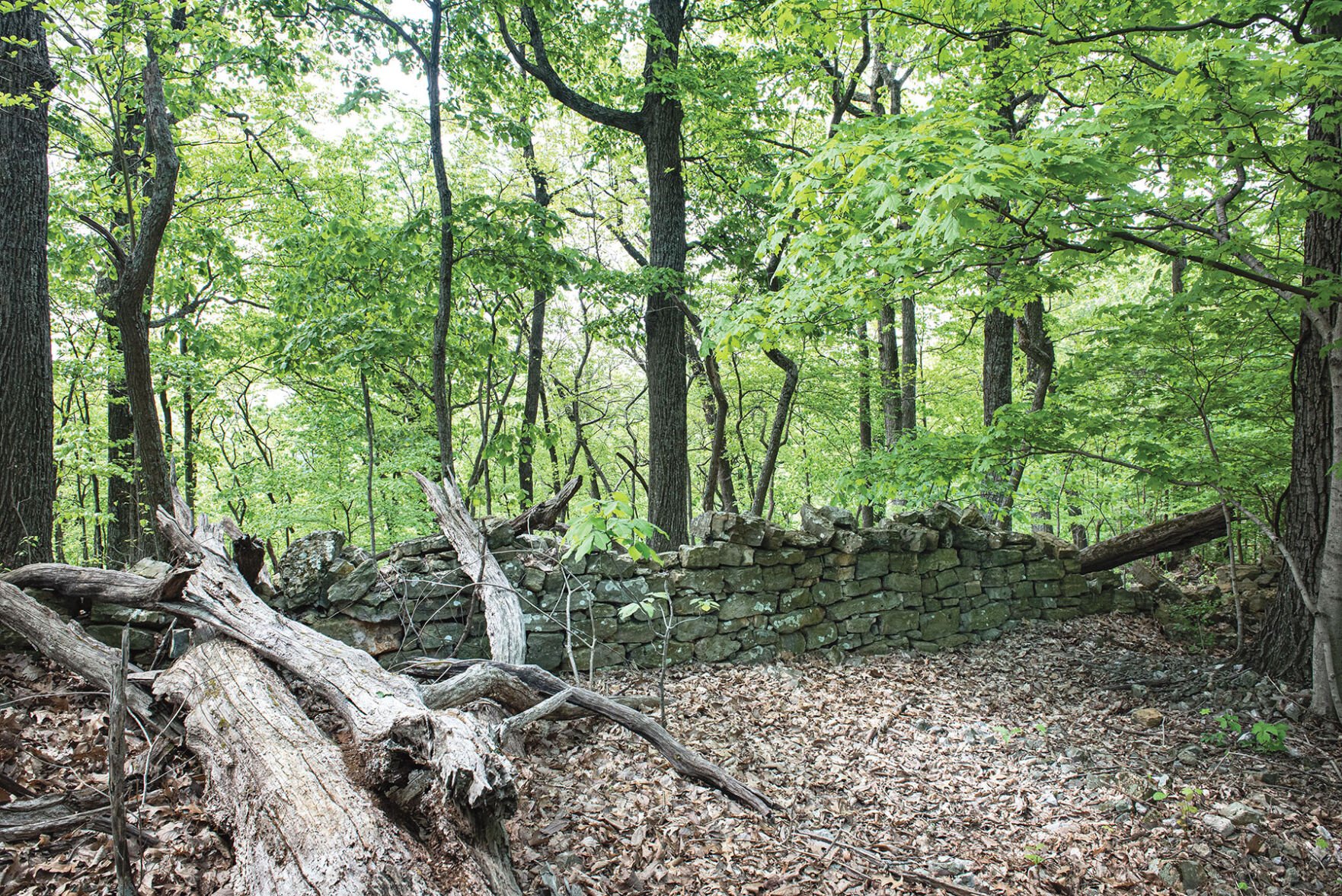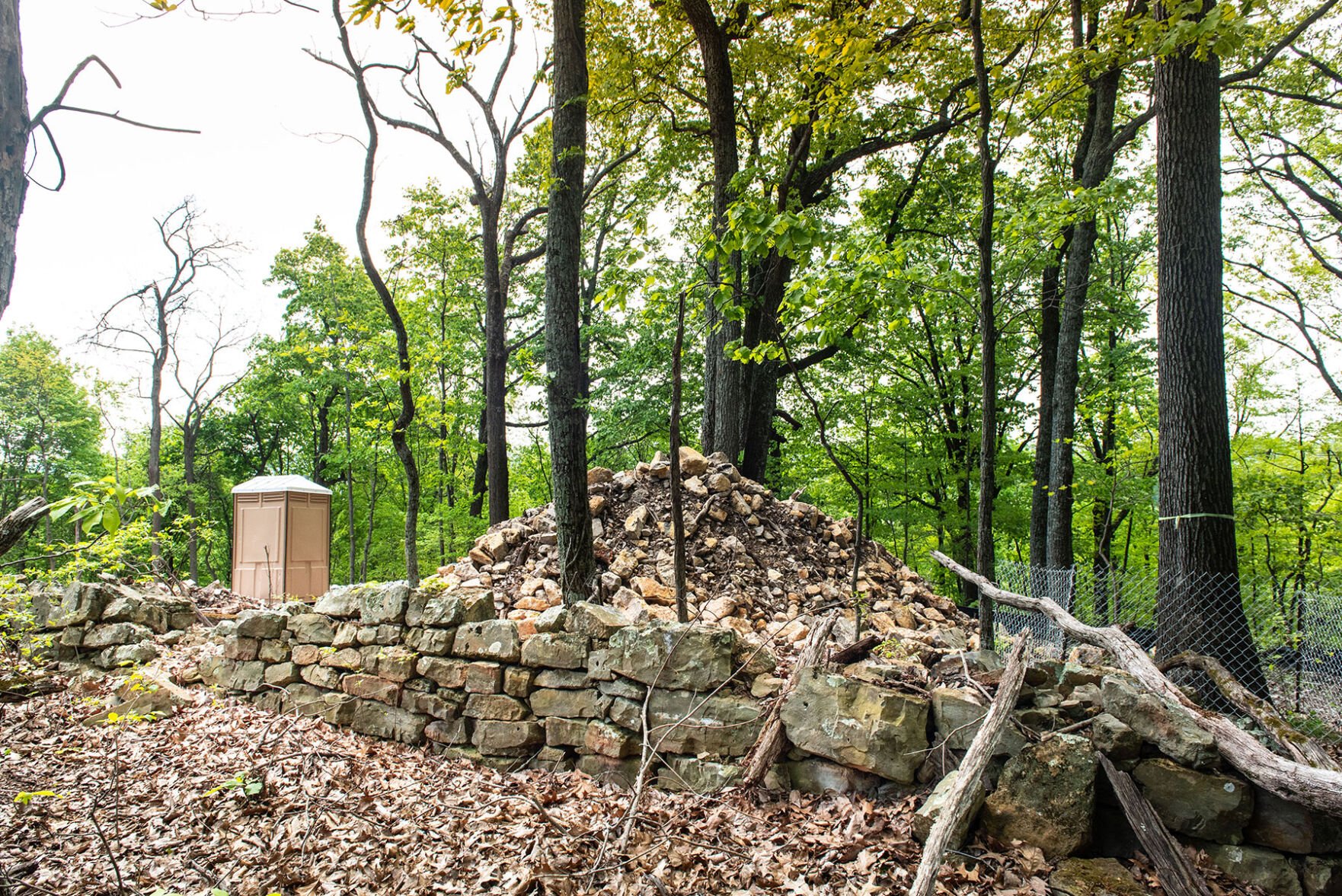For 21 years, Trent Rosenbloom has scurried up the ridges that gird West Meade.
The hills rise sharply from the hollows and bottomlands between Belle Meade and Bellevue, Highway 70 cresting dramatically up Ninemile Hill before swooping down in the Harpeth River’s watershed.
For decades, the ridges were a natural property line for the Harding family’s Belle Meade Plantation. Even when what we now call West Meade was subdivided in the 1950s and ’60s, homebuilders largely kept off the top of the ridges. It’s too hard, too expensive to haul construction equipment up the hills, too narrow and treacherous to try and lay a foundation. It’s hard enough to walk up them carrying nothing more than a reporter’s notebook. Well, it’s not all that hard for Rosenbloom, who’s been at it for two decades and organizes the Flying Monkey Marathon, the annual 26.2-ish-mile course up and down the hills at Percy Warner Park.
So Rosenbloom likes his ridges. He likes climbing up and sliding down on his jacket when it snows. And he likes poking around in the woods for morels, the fungal delicacy so coveted by foragers.
And so it was April 21. Rosenbloom trekked up a Metro Water access road and scrambled up the ridge to where he knew a stone wall marked the crest.
“My heart sank when I got up here,” he tells the Scene a few days after that climb.
While a long stretch of the wall remains in good shape even 200 or so years after its construction, the portion heading east down the ridge was gone, its stones piled up with field rock and other rubble in a clearing.
Academics call the walls “dry stack walls,” and they are common throughout Middle Tennessee and Kentucky. Built without mortar, they are held together by their own weight, each stone a puzzle piece in an enduring structure.
Colloquially, they are often called “slave walls,” because their ubiquity on antebellum farms naturally leads people to believe they were built by enslaved people. Historians say that’s not the whole story. The technique came from Scotland, thus why the walls occur so frequently in these parts where Scottish and Scotch-Irish settlers were common. Many of the earliest walls were likely built by the Scottish masons and paid labor, but later maintenance and some later construction probably was performed by enslaved people under the supervision of masons.
There are records of several formerly enslaved people becoming masons and wall-builders after manumission.
The construction of this particular wall was surely an exhausting undertaking. The limestone may have been quarried down in the bottomlands and then hauled up the ridges to be carefully placed.
“They may be the only remaining monument to the hard and forced labor that led to their creation, the names of the craftsman who built them long lost to history if they were ever recorded at all,” Rosenbloom wrote on Facebook after his discovery.

What led to this particular wall’s destruction is the ongoing construction of an 11,000-square-foot mansion perched on the ridgetop. The driveway winds up the ridge from Jocelyn Hills Road and curves behind the footprint of the future home, breaching the wall in two places. Now the stones from the wall, their tool marks still visible, are discarded at the back of the lot.
Unfortunately, little can be done. Governments can — and increasingly do — urge property owners to preserve the walls. Tennessee passed a law two decades ago urging the Tennessee Department of Transportation to preserve the walls where possible on public rights-of-way. But on private property, the owners can do with the wall what they will. And if a 200-year-old wall so meticulously crafted that it still stands needs to go for a driveway turnaround for a mega-mansion, the power of the state is impotent to stop it.
What’s more, a number of old-growth trees have been clear-cut, including a sassafras that won the Nashville Tree Foundation’s Big Old Tree Contest in 2020. A number of prominent oaks and chestnuts were also leveled.
Replacing the trees and their ground-gripping roots, which hold up the soil and soak up precipitation runoff: thousands of square feet of impervious surface.
And that has major implications down the hill. During the Midstate’s historic May 2010 flooding, the hill face behind Rosenbloom’s home collapsed, crashing through a minivan, the garage and the first floor of the house. The rushing water carried a multiple-ton rock down Carnavon Parkway. The stone was so stout, Rosenbloom says, that a contractor nearly had to dynamite it.
For decades, the ridges have been a de facto commons for the residents of the valley below. Yes, there are property lines, but up the hill, they have been largely irrelevant. The people below all tacitly agreed to leave the space wild and the walls erect, a collective patrimony willed to posterity.
But the commons are fragile and their famous tragedy is that unspoken agreements and traditions and unanimous benignness can all come crashing down like a hillside in a flood, or a wall under a bulldozer.





